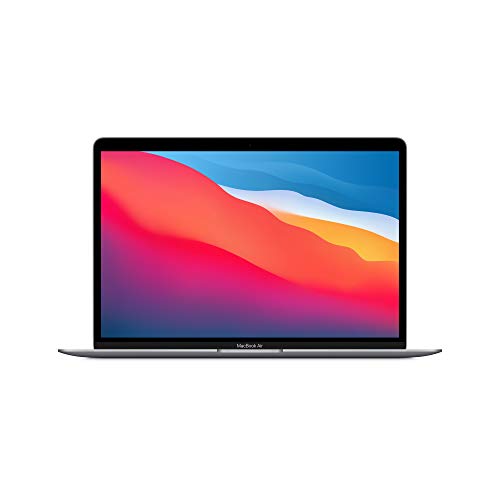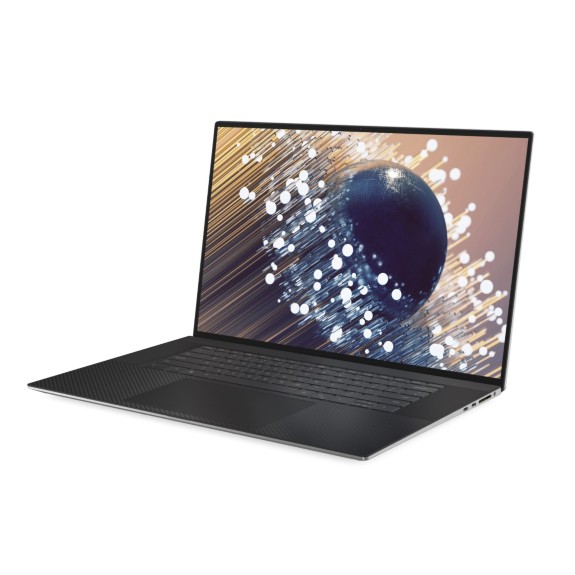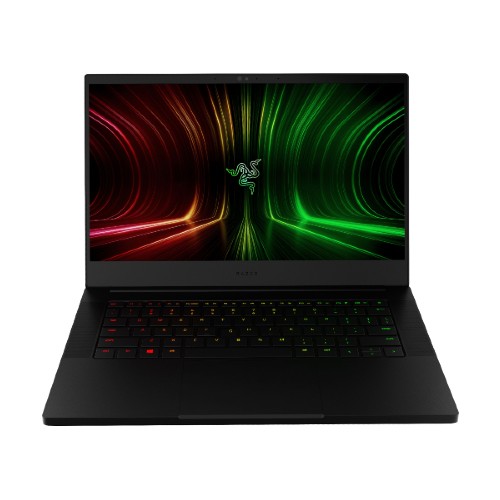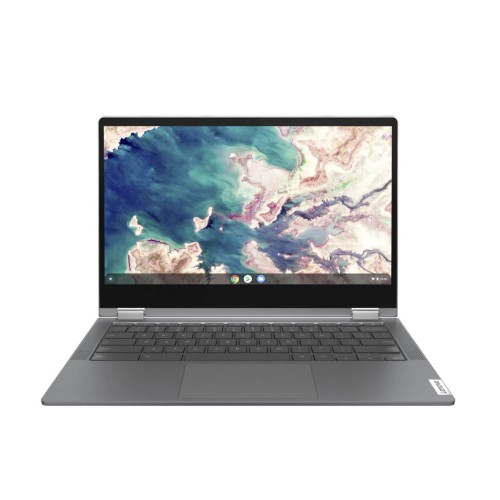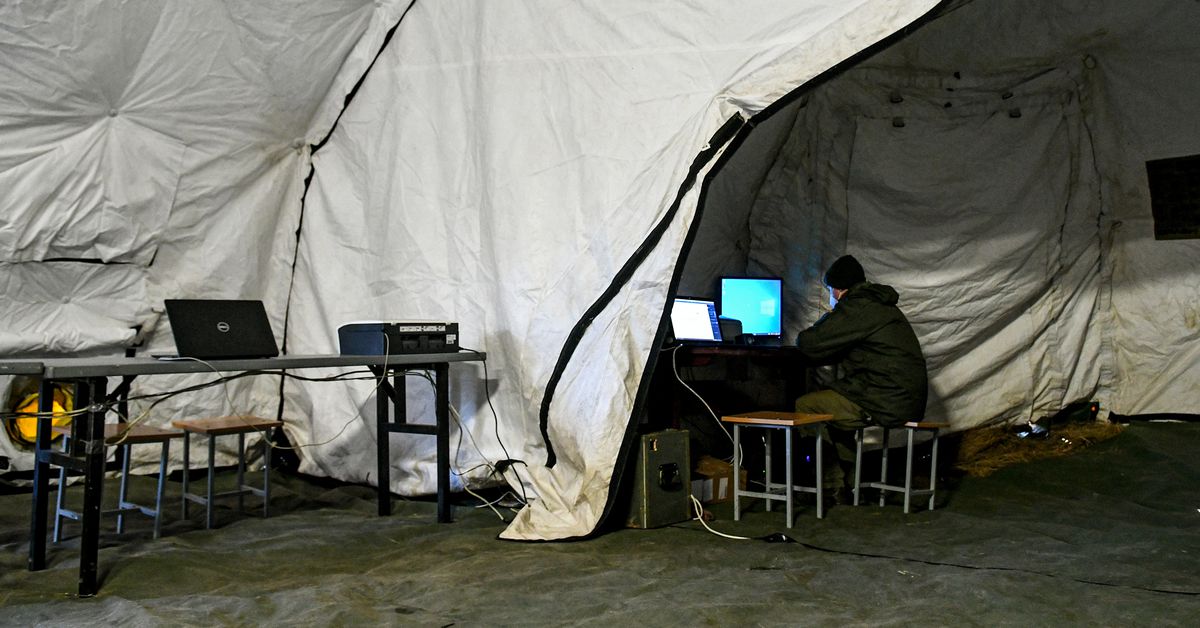The best laptops in 2022
Looking for the best laptops to buy in 2022? We've tested and reviewed top laptops, Chromebooks, and MacBooks to help you choose.

We've tested and reviewed well over 500 laptops over the years, searching for the best of the best. But to earn the crown for "best laptop" in 2022, it needs to have it all: Gorgeous design, killer performance, a productive keyboard, long-lasting battery life, and much more.
Each of the laptops below has been vetted thoroughly, whether it's an affordable Chromebook or a decked-out gaming laptop. Our pick for the best overall laptop, the Dell XPS 13, is the option we recommend to most people, but something from the list below should suit your needs.
 Mark Coppock/Digital Trends
Mark Coppock/Digital Trends
Dell XPS 13 OLED
The best laptop
Pros
Streamlined design Tiny bezels all around 16:10 display adds to productivity Keyboard and touchpad are larger and excellent Solid productivity performanceCons
Connectivity is limited Battery life has been downgradedWhy you should buy this: It's the best overall laptop you can buy in 2022.
Who it's for: Almost everyone unless you have a specific need such as gaming or video editing.
Why we picked the Dell XPS 13 OLED:
No laptop in the past few years has been more influential than the XPS 13. It started the race to thinner bezels back in 2015, which has now spread to every gadget that has a screen.
In its current iteration, which was updated in 2020, Dell took things even further. The latest XPS 13 made the screen larger using a 16:10 aspect ratio, all while shrinking the bottom bezel. The result is a larger screen without needing a larger overall laptop, another trend that many other laptops have come to copy. Dell most recently added a 3.5K OLED display option that elevates the laptop even higher.
That update of the Dell XPS 13 also received a larger keyboard and touchpad, making use of every possible surface of the device. It's just as powerful and long-lasting as before, not sacrificing function over form. The XPS 13 starts out with a Core i3-1115G4, 8GB of RAM, a 256GB solid-state drive (SSD), and a Full HD (1920 x 1080) display and can be configured with a faster Core i7-1185G7, up to 32GB of RAM, up to 2TB of storage, and the OLED display.
It all adds up to what is undoubtedly the best laptop you can buy. We've reviewed very competitive rivals like the HP Spectre x360 14 and Razer Book 13, but still found the XPS 13 to be the best option.
Dell XPS 13 OLED
The best laptop
 Mark Coppock/Digital Trends
Mark Coppock/Digital Trends
Apple MacBook Air M1
The best MacBook
Pros
Apple's M1 blows Intel away Phenomenal battery life Excellent keyboard and touchpad Rock-solid build quality Simple good looksCons
Supports only one external displayWhy you should buy this: It's the best laptop for college students and the best MacBook for 2022.
Who it's for: College students and Apple fans.
Why we picked the MacBook Air M1:
It might not look any different, but the most recent MacBook Air is a huge departure from the Macs of recent years. Like the latest MacBook Pro and Mac Mini, the MacBook Air now runs on Apple's own silicon, the M1 chip. Despite not increasing the price of the laptop, this M1 chip brings a few major advantages to the MacBook Air, making it the perfect laptop for college students. In addition to the M1 chip, you can configure up to 16GB of RAM and up to a 2TB SSD.
The two big improvements the M1 brings are battery life and performance. The old MacBook Air was hamstrung by a slow, dual-core processor. Not only is the new MacBook Air now completely fanless — it doesn't have to sacrifice speed to keep the temperatures down.
The battery life, though, is really what makes this the ultimate student laptop. You'll enjoy all-day battery life (or multiple days if your use is sparing) — perfect for classrooms, coffee shops, libraries, and other locations where an outlet is hard to find.
Indeed, $999 isn't cheap, but the $100 discount for students makes the MacBook Air a perfect gift for a student going off to college. There are other excellent MacBooks, such as the MacBook Pro 14 and 16, that offer incredible performance and efficiency — but at a very high price, making the MacBook Air M1 more accessible to most people.
Apple MacBook Air M1
The best MacBook

Acer Swift 3 (Ryzen)
The best budget laptop
Pros
Solid build quality Supreme performance Great value Comfortable keyboardCons
Mediocre touchpad Dim display, narrow color gamutWhy you should buy this: It's the best budget laptop you can buy right now.
Who it's for: Anyone who cares more about performance and functionality than style.
Why we picked the Acer Swift 3:
Usually, when you spend around $650 for a budget laptop in 2022, one of the first things you give up is performance. That's not the case with the AMD version of the Acer Swift 3, which equips a Ryzen 7 4700U CPU. That's an eight-core processor that churns through demanding tasks and laughs at mere productivity work. You can do real video editing work on this laptop, and that's amazing for the price.
You also get 8GB of RAM and a 512GB SSD, which is also great value. We're not that excited about the display, but something had to give. The Acer Swift 3's build quality, though, is fine, even if this isn't the prettiest laptop around.
Acer Swift 3 (Ryzen)
The best budget laptop

MacBook Pro 16
The best laptop for photo and video editing
Pros
Incredible XDR display Fantastic creative performance Extensive port selection Keyboard and trackpad are perfect Excellent speakers and webcam Endless battery lifeCons
Notch is a distractionWhy you should buy this: It's the best laptop for photo editing or video editing you can buy.
Who it's for: Creative professionals who need a seriously powerful laptop.
Why we picked the Apple MacBook Pro 16:
The MacBook Pro 16 fixed a lot of the problems with the "Pro" line in the past few years. The Touch Bar is gone. Extensive port selection is back. It's even thicker and better-cooled now.
But it's more than just an apology tour. The 120Hz mini-LED screen is the best laptop screen we've ever seen, especially when viewing HDR content. The M1 Pro and M1 Max, meanwhile, add discrete-level graphics to the incredible efficiency of the M1. Battery life is off the charts. The 1080p webcam and improved speakers are both best-in-class.
The price and performance mean it's not for everyone, though. The average person doesn't need more than the MacBook Air. But if you need a powerful laptop for content creation, the MacBook Pro is the best "pro" laptop you can buy.
MacBook Pro 16
The best laptop for photo and video editing

Dell XPS 17
The best Windows alternative to the MacBook Pro
Pros
Nearly perfect screen Incredible performance Four Thunderbolt 3 ports Keyboard and touchpad are excellent Surprisingly smallCons
Disappointing battery life ExpensiveWhy you should buy this: It's a great Windows alternative to the MacBook Pro.
Who it's for: Video editors who want powerful components and a big, beautiful display.
Why we picked the Dell XPS 17:
When you're editing video, you want plenty of space to view both the results and your favorite application's interface. But, if you're using a laptop rather than a desktop PC, then you want to be able to do your editing on the go. That's where larger laptops come in — they're powerful and, thanks to today's thin-bezel movement, highly portable.
The biggest and most powerful of the bunch for video editing is the Dell XPS 17. Despite having a 17-inch screen, the overall size of the laptop is not much bigger than your average 15-inch laptop. That's thanks to the tiny bezels, of course. It even comes with four powerful Thunderbolt ports and a full-size SD card slot for convenient transfers directly from your camera.
But the performance is what really counts for video-editing laptops. Between the eight-core, Core i9 processor and an Nvidia RTX 3060, the Dell XPS 17 is one of the most powerful consumer-class video editing laptops we've ever tested, blowing through video exports in Adobe Premiere like nobody's business. The gorgeous 4K display is the final piece of the puzzle, which is bright, beautiful, and has nearly perfect color reproduction. You can trust your color edits with this one.
Dell XPS 17
The best Windows alternative to the MacBook Pro

Razer Blade 14
The best gaming laptop
Pros
Gaming performance is excellent Colorful, 1440p display Surprisingly small Cheaper than Razer Blade 15 Great battery lifeCons
Warm surface temperatures Thick bezelsWhy you should buy this: It's the best gaming laptop you can buy in 2022.
Who it's for: People who want a fantastic laptop that can also game.
Why we picked the Razer Blade 14:
The Razer Blade 14 feels like it shouldn't be possible. Up to an RTX 3080 in a thin, 14-inch laptop? Yep, that's right. And it does it with some pretty impressive performance too.
There will always be room for larger gaming laptops like the Razer Blade 15 or Lenovo Legion 5 Pro, but the Razer Blade 14 still feels like a miracle. It's the first AMD-powered Razer laptop, featuring the powerful Ryzen 9 5900HX. It also sports a 1440p 240Hz screen, ensuring that you're never bottlenecked by the display. Amazingly, the Razer Blade 14 does all this at a few hundred dollars cheaper than the Razer Blade 15.
But no, it's not the cheapest gaming laptop. Nor is it the most powerful. It is, however, the best overall gaming laptop you can buy.
Razer Blade 14
The best gaming laptop
Google Pixelbook Go
The best Chromebook
Pros
Portable design Bright, colorful display Speakers are impressive Excellent battery lifeCons
Chunky bezels No fingerprint scannerWhy you should buy this: It's the best Chromebook you can buy.
Who it's for: Students, people who need only basic functionality, anyone who wants a cheap laptop to use as a second PC.
Why we picked the Google Pixelbook Go:
Chromebooks are best-known as cheap alternatives to Windows PCs, and there are plenty of good options for under $500. The Pixelbook Go, though, makes a serious case for a Chromebook with a bit more finesse. It's beautifully designed, rigidly built, and a joy to use.
Thanks to its ultra-light 2.3-pound weight and fantastic battery life, it's a great option for students and people taking their work on the go. With a starting price of $649, the Google Pixelbook Go is a significant price cut from the $999 original Pixelbook, while maintaining many of its best aspects.
You do, of course, face the usual limitations with Chrome OS. It's designed around Google's Chrome web browser, meaning you can't download your normal Windows applications. It's wonderfully simple and intuitive to use, however, and with the inclusion of the Google Play Store, you can fill some of the gaps in software with Android apps.
The Samsung Galaxy Chromebook 2 and Asus Chromebook Flip C436 both give the Pixelbook Go a run for its money, but in terms of battery life and portability, it's still undefeated.
Google Pixelbook Go
The best Chromebook

Microsoft Surface Pro 8
The best 2-in-1 laptop
Pros
Gorgeous, 120Hz screen Impressive performance Has two powerful Thunderbolt 4 ports SSD is easily accessible The Surface Slim Pen 2 is exceptionalCons
More expensive Still lacks mobile appsWhy you should buy this: It's the best 2-in-1 laptop you can buy.
Who it's for: Anyone who needs versatility on top of performance.
Why we picked the Surface Pro 8:
The Surface Pro hasn't changed much over the years. But with the Surface Pro 8, it received the upgrades it always deserved. With thinner bezels, a larger screen, and a redesigned stylus, the Surface Slim Pen 2, the Surface Pro 8 finally feels ready to take on the iPad Pro for all its worth.
The Surface Pro 8 even features a 120Hz refresh rate to pair with its larger 13.3-inch screen. It's an absolutely gorgeous display. The detachable keyboard and touchpad are as solid as ever, and the new Slim Pen 2 slot is downright clever.
Windows 11, though, is the key feature. Coming preinstalled, Windows 11 dramatically increases the usability of the Surface Pro 8 as a tablet. Using the device without the keyboard is no longer a huge pain. And while it might not have the tablet app ecosystem that the iPad has (that is, until Android apps finally show up), the Surface Pro 8 is the best representation of a 2-in-1 Windows has ever had.
Microsoft Surface Pro 8
The best 2-in-1 laptop

HP Elite Dragonfly G2
The best business laptop
Pros
Perfect size for traveling Lots of security features Incredible battery life Great port selectionCons
Older processors Keyboard feels crampedWhy you should buy this: It's the best business laptop you can buy in 2022.
Who it's for: Business pros who want a laptop that won't embarrass them.
Why we picked the HP Elite Dragonfly G2:
Business laptops have a certain stigma around them. It's often assumed that they need to be clunky, ugly, and full of bloatware. Not so.
The Elite Dragonfly G2 has everything your IT department will need (and you'll appreciate) without getting in the way of a supremely beautiful and modern laptop. The ideal person for the Dragonfly is someone who takes their work on the go with them, whether that's on long flights or subways. That's where the Dragonfly really comes alive as a highly portable laptop that might actually fit on your pull-down tray. Intel 11th-gen Core processors, with the business-friendly vPro option, are matched with up to 32GB of RAM and up to 2TB of storage to provide for excellent productivity and performance.
On top of all that, the HP Elite Dragonfly G2 is one of the first 5G-enabled laptops, which could come in handy as the faster connectivity standard rolls out. And, HP announced a new model of the laptop at CES 2022, the Elite Dragonfly G3 which adds a number of features — like a better webcam and a 3:2 OLED display — that make the laptop even better for remote workers. Stay tuned for reviews of the new model, and it will likely take this spot once we've had a chance to check it out.
HP Elite Dragonfly G2
The best business laptop

Lenovo Chromebook Flex 5
The best laptop for under $500
Pros
Responsive keyboard Impressive performance Great value Under three poundsCons
Bad touchpad Mediocre displayWhy you should buy this: It's the best laptop you can buy for under $500.
Who's it for: Students, those with basic computing needs
Why we picked the Lenovo Chromebook Flex 5:
Many people don't use their laptops for more than web browsing, social media, watching videos, and online apps for work. A cheap Chromebook fits the bill. Not all Chromebooks under $500 are made equal, though. The Lenovo Chromebook Flex 5 outdoes many of its competitors with its fast Intel Core i3 processor, solid 1080p screen, and impressive battery life. It also comes in a fairly portable package with an aesthetic that doesn't offend.
It's not a perfect laptop — the touchpad could be better, as could the speakers. But if your computing needs are fairly basic, don't spend more than you need to on your next laptop. The Lenovo Chromebook Flex 5 will surprise you with just how much laptop $460 can buy you.
If you need a Windows laptop under $500, the 2020 Acer Aspire 5 is a solid option — just stay away from the 2021 model.
Lenovo Chromebook Flex 5
The best laptop for under $500
Frequently Asked Questions
What's the best laptop brand?
Picking just one laptop brand as the best is a bit of a challenge lately. There are so many great laptops available today, and they come from several manufacturers. Hold our feet to the fire, though, and we'll have to pick Dell as the overall best. Dell seems invested in applying the latest materials to improve the performance of its laptops, and it's constantly coming up with new innovative designs.
HP is no slouch either. It, too, utilizes some unique materials and makes some customer-friendly design decisions, such as resisting the thin-and-light trend to pack in more battery capacity.
In terms of customer service and reliability, Apple carries the torch for its convenience. Its issues with its recent keyboards have been fixed, making MacBooks highly durable. Its customer service is top-notch.
What's a 2-in-1 laptop?
A 2-in-1 laptop is one that isn't limited to the traditional clamshell configuration. Instead, a 2-in-1 can convert from a clamshell into some form of tablet PC that allows for natural inking and media consumption.
The concept isn't brand-new — Microsoft sold a "Tablet PC" version of Windows as far back as 2001 that supported pen input, but it never caught on. As electronics have gotten more powerful and fit into smaller chassis, and capacitive touch and active pen technology have improved, the modern 2-in-1 has emerged. Microsoft kicked off the form factor with its Surface line in 2012, and most manufacturers followed with their versions.
Today, you can pick from among a variety of different kinds of 2-in-1s. The most popular types are the tablet with a detachable keyboard, epitomized by the Microsoft Surface Pro 8, and the 360-degree convertible where the display flips around to turn into a (usually larger) slate.
The main advantage of the tablet 2-in-1 is portability — tablets are extremely thin, light, and easy to carry around — while they also work the best for drawing and taking notes on the pen-enabled display. The 360-degree convertible 2-in-1, on the other hand, isn't quite as handy as a tablet but it tends to work better in clamshell laptop mode — especially when using it on the lap, where it's more stable than most detachable tablets.
What processor should I buy?
The most popular CPUs for laptops today are Intel's 11th-generation Tiger Lake processors that include fast and efficient U-series and high-powered H-series models. For most productivity Windows 11 users, we recommend a minimum of the Core i5-1135G7, which is a highly capable processor that can handle most productivity tasks without slowing down. It's also efficient, meaning you'll enjoy great battery life. If you skip back to older generations of Intel processors, you'll find slower clock speeds and fewer cores at your disposal, meaning you may run into bottlenecks while multitasking or running multi-threaded applications. Intel's revolutionary 12th-gen Alder Lake CPUs are on the way and will take their place in this description soon.
Chromebook running on Google's more efficient Chrome OS can utilize slower processors and still perform well, such as an Intel Core i3 or even a Pentium processor. Not many Chromebooks bother with the fastest Core i7 CPU.
If you're looking for a gaming or content creation laptop, we recommend either last year's eighth-generation or the most current ninth-gen, ultra-power H-series CPUs. You'll find these in laptops ranging from the Dell XPS 15 to the Razer Blade 15.
How much RAM do I need?
The sweet spot for memory for both laptops and desktops is 8GB. You can check out our explainer on how much RAM do I need for the details. But generally speaking, 8GB will suffice whether you're running Windows, MacOS, or even the more lightweight Chrome OS. And, it will provide plenty of headroom for multitasking and more demanding applications. If you're doing high-end photo, video editing, or gaming, then we recommend 16GB (or more).
Should I buy a laptop or a tablet?
As we mentioned above, you can get a tablet that can morph into a laptop just by attaching a keyboard. And so, if you really want the power of Windows in a form factor that's easier to carry around, then you can select a tablet 2-in-1. With the advent of Windows 11, it's finally starting to become a better software platform for tablets. If you want the utmost in simplicity and an even smaller device, then a pure tablet like the iPad can be great for web browsing, triaging email, consuming media, and other tasks that don't require the full power of a "real" PC.
So, where doesn't a tablet work? If you're a hardcore gamer, need a laptop that can churn through video and huge photos, or do a lot of multitasking. Tablets are very thin and tend to use slower CPUs and integrated graphics that won't accelerate creative applications or power modern games. Meanwhile, the software on these devices isn't as full-featured as a desktop operating system like Windows 10 or MacOS.
Should my laptop have USB-C? {USB-C}
The short answer is: Yes, you should try to pick up a laptop with at least one USB-C port. This is the latest in connectivity that ensures that you can connect to legacy devices (via adapters) while being covered for future devices as well. USB-C can provide for data transfer, power, and display connections, and USB-C hubs can greatly extend how many peripherals you can easily connect to your laptop.
The good thing is that laptops, even budget models, increasingly include USB-C. The longer answer is that not only do you want USB-C, but you want ports that support the even more powerful Thunderbolt 4 standard. Thunderbolt 4 provides up to 40 gigabits per second (Gb/s) over a single connection and 32Gb/s PCIe data transfer, which is twice the bandwidth of Thunderbolt 3. It can support multiple 4K displays and external GPU enclosures that can greatly improve graphics performance.

 Astrong
Astrong 
